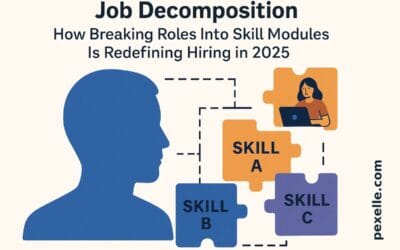Why the Same Skill Can Differ Across Countries: A Deep Dive into Execution, Knowledge Requirements, and Job Market Demand

Introduction
At first glance, a skill like carpentry might seem universal. A hammer is a hammer, and wood is wood—right? In reality, the execution of a skill, the depth of knowledge required, and the opportunities it creates in the job market can vary drastically from one country to another. These differences are shaped by a complex interplay of cultural norms, technological adoption, regulatory frameworks, and economic conditions. Understanding these variations is essential for professionals, trainers, and policymakers who want to bridge global skill gaps.
1. Cultural and Traditional Influences
Every country has its own cultural approach to how a skill is practiced.
- Carpentry Example: In Japan, traditional joinery techniques avoid nails or screws, requiring deep craftsmanship knowledge passed down through generations. In contrast, in the United States, modern carpentry often emphasizes speed and scalability, using power tools and prefabricated materials.
- Impact: These cultural differences affect the execution style and the training pathway for the same skill. What is considered “mastery” in one country might be a niche specialty in another.
2. Education and Training Systems
The level of knowledge and training required for a skill can vary depending on a country’s vocational education system.
- Formal Certification: Countries like Germany, with their dual-education system, have strict apprenticeship structures, formal assessments, and state-recognized certifications.
- Informal Learning: In many developing countries, skills like carpentry or welding are often learned informally through family businesses or on-the-job training.
- Impact: This affects not only the depth of theoretical understanding but also the transferability of skills across borders. A German-trained carpenter may have studied structural engineering principles, while a self-taught carpenter may rely on practical experience.
3. Technological Integration
The tools and technologies available in a country significantly shape how a skill is executed.
- High-Tech Environments: In advanced economies, skills are often performed with the aid of automation, digital design software, or precision machinery (e.g., CNC machines in carpentry).
- Low-Tech Environments: In resource-limited settings, the same skill may rely entirely on manual techniques and local materials.
- Impact: This difference changes the speed, scalability, and safety standards of work, as well as the upskilling requirements for workers.
4. Regulatory and Safety Standards
Different countries have different safety regulations, quality controls, and legal requirements for practicing a skill.
- Strict Regulations: Countries like Australia require formal licensing and compliance with building codes.
- Minimal Regulation: In other regions, there may be little to no oversight, meaning execution methods can vary widely.
- Impact: Regulations influence the minimum knowledge threshold and the cost of entering the profession.
5. Economic and Market Demand
The job market for a skill depends heavily on a country’s economic structure and demand patterns.
- High-Demand Contexts: In countries experiencing rapid urbanization, construction-related skills like carpentry may be in high demand, with good wages.
- Low-Demand Contexts: In economies shifting toward automation or imports, the same skill might be in decline, making jobs scarce.
- Impact: This shapes not just career opportunities, but also investment in skill development within that country.
6. Global Mobility and Skill Recognition
In an increasingly interconnected world, professionals may want to work abroad—but not all skills are equally recognized across borders.
- Example: A carpenter trained in a country with minimal formal certification might face barriers working in a country that requires standardized qualifications.
- Impact: Skill recognition affects migration potential, earning power, and career growth.
Conclusion
A skill like carpentry may seem universal, but the reality is far more complex. Cultural traditions, education systems, technology levels, regulations, and market conditions all shape how a skill is executed, how much knowledge is required, and how well it pays in the job market. For policymakers, this means creating adaptable frameworks for skill recognition. For workers, it highlights the importance of understanding not just the skill itself, but the context in which it will be applied.
Source : Medium.com




